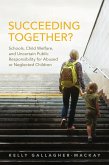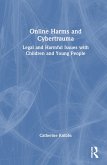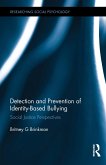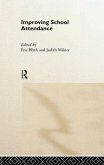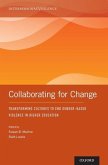It is only by understanding the multiple contexts of school violence, the authors argue, that truly effective prevention programs, interventions, research agendas, and policies can be implemented. Drawing on the only major study ever conducted comparing Jewish and Arab-Israeli students, in conjunction with census and police data on neighborhood characteristics, Astor and Benbenishty explore and differentiate the many manifestations of victimization in schools, providing a new model for understanding school violence. Their innovative research maps the contours of verbal, social, physical, and sexual victimization as well as weapons possession, presenting some startling findings along the way. When comparing schools in Israel with schools in California, the authors demonstrate for the first time that for the most violent events the pattern of violent behaviors have strong cultural influences. They reveal, for example, how Arab boys encounter much more boy-to-boy sexual harassment than their Jewish peers, and that teacher-initiated victimization of students constitutes a significant and often overlooked type of school violence.
Drawing on one of the most comprehensive and representative studies of school violence ever conducted, Benbenishty and Astor explore and differentiate the many manifestations of victimization in schools, providing a new model for understanding school violence in context. The authors make striking use of the geopolitical climate of the Middle East to model school violence in terms of its context within as well as outside of the school site. This pioneering new work is unique in that it uses empirical data to show which variables and factors are similar across different cultures and which variables appear unique to different cultures. This empirical contrast of universal with culturally specific patterns is sorely needed in the school violence literature. The authors' innovative research maps the contours of verbal, social, physical, and sexual victimization and weapons possession, as well as staff-initiated violence against students, presenting some startling findings along the way. When comparing schools in Israel with schools in California, the authors demonstrate for the first time that for most violent events the patterns of violent behaviors have the same relationship for different age groups, genders, and nations. Conversely, they highlight specific kinds of violence that are strongly influenced by culture. They reveal, for example, how Arab boys encounter much more boy-to-boy sexual harassment than their Jewish peers, and that teacher-initiated victimization of students constitutes a significant and often overlooked type of school violence, especially among certain cultural groups. Crucially, the authors expand the paradigm of understanding school violence toencompass the intersection of cultural, ethnic, neighborhood, and family characteristics with intra-school factors such as teacher-student dynamics, anti-violence policies, student participation, grade level, and religious and gender divisions. It is only by understanding the
Drawing on one of the most comprehensive and representative studies of school violence ever conducted, Benbenishty and Astor explore and differentiate the many manifestations of victimization in schools, providing a new model for understanding school violence in context. The authors make striking use of the geopolitical climate of the Middle East to model school violence in terms of its context within as well as outside of the school site. This pioneering new work is unique in that it uses empirical data to show which variables and factors are similar across different cultures and which variables appear unique to different cultures. This empirical contrast of universal with culturally specific patterns is sorely needed in the school violence literature. The authors' innovative research maps the contours of verbal, social, physical, and sexual victimization and weapons possession, as well as staff-initiated violence against students, presenting some startling findings along the way. When comparing schools in Israel with schools in California, the authors demonstrate for the first time that for most violent events the patterns of violent behaviors have the same relationship for different age groups, genders, and nations. Conversely, they highlight specific kinds of violence that are strongly influenced by culture. They reveal, for example, how Arab boys encounter much more boy-to-boy sexual harassment than their Jewish peers, and that teacher-initiated victimization of students constitutes a significant and often overlooked type of school violence, especially among certain cultural groups. Crucially, the authors expand the paradigm of understanding school violence toencompass the intersection of cultural, ethnic, neighborhood, and family characteristics with intra-school factors such as teacher-student dynamics, anti-violence policies, student participation, grade level, and religious and gender divisions. It is only by understanding the


